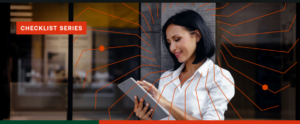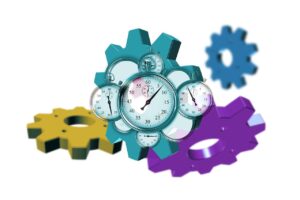So, You'd Like To Run A #Hackathon? A How To Guide
What to do when asking people to practice empathy towards another.
 I absolutely love it when law firms look outside of its industry to find potential solutions. Many law firms are struggling with difficult issues, such as: How do we develop future leaders? How do we collaborate more? How do we create a healthier workplace where people can thrive? How do we teach future generation of lawyers to become collaborative leaders?
I absolutely love it when law firms look outside of its industry to find potential solutions. Many law firms are struggling with difficult issues, such as: How do we develop future leaders? How do we collaborate more? How do we create a healthier workplace where people can thrive? How do we teach future generation of lawyers to become collaborative leaders?
These types of questions require deep conversations and cross-pollination of ideas. Sometimes, it can be difficult to even know how to begin these types of conversations. You’re asking people to practice empathy towards another. To listen to understand and not just listen to respond.
There are many collaborative “tool kits” that can guide your team in how to structure the conversations, ask the right questions, and move towards prototyping solutions. This requires getting out of the “win or fail” mindset into “data gathering” mindset.

How Savvy Lawyers Build Their Law Firm Rate Sheet
Coming up with ideas, quickly implementing them to test, gather data, learn from each iteration then improve the process each time (process known as prototyping).
Sometimes, in the tech world, #Hackathon describes a group of programmers who will gather and create a prototype (a potential solution) to the problem. Often, the programmers are broken up into teams and compete or “pitch” their ideas to judges. There’s sometimes a prize at the end, for example, an opportunity to join an incubator where the team will receive mentorship, training, and funding.
However, this is just one model for holding a hackathon. For most organizations, these types of marathons, pitting one team against each other promotes the exact opposite of what you want the members to learn from the event. Important lessons such as collaboration, empathy, and listening skills gets lost.
I am not suggesting that there isn’t a place for these types of events at a law firm. It’s just jumping way too many steps. The first step to solving any problem is to properly define what the problem is.
Sponsored

A Law Firm Checklist For Successful Transaction Management


Not All Legal AI Is Created Equal


How To Build And Manage Your Law Firm Rate Sheet

Trust The Process: How To Build And Manage Workflows In Law Firms
This is true whether you’re solving your client’s problem or your law firms. You have to begin by listening — with empathy to fully to understand what the people involved want.
Skip this step, you run into the risk of solving for a problem that (a) doesn’t exist or (b) creates an unworkable solution.
A successful hackathon must begin by spending a considerable amount of time engaged in patient conversations with the stakeholders. Also, this is a place where ideas must be not only welcomed but encouraged. This includes “bad” ideas. This means including the introverted team members! Radical inclusion is key.
It’s helpful use refer to the design thinking cycle: Empathize -> Define -> Ideate -> Prototype -> Test.
An important thing to remember here — this is an iterative process. You can (and likely will) go through the cycle many times. Each time, you gather data, and improve.
Sponsored

Trust The Process: How To Build And Manage Workflows In Law Firms

How Savvy Lawyers Build Their Law Firm Rate Sheet
Here’s an example of how this might work at a law firm. Let’s suppose that your firm is having difficulties retaining talent. The first step in this process is to engage in conversation about why this might be happening. You will need to create an opportunity where people can engage in empathetic conversations about some of the underlying issues.
This is likely not going to be an easy conversation. How you frame your intention behind doing this workshop is going to be important.
Take a look at this handy empathy map.
It’s worthwhile to begin the day by practicing some basic tools on deep listening:
SAY: What are some quotes and defining words your user [stakeholder] said?
DO: What actions and behaviors did you notice?
THINK: What might your user be thinking? What does this tell you about his or her beliefs?
FEEL: What emotions might your subject be feeling?
It’s important to spend as much time as possible in the Empathy and Define stage and not hurry through. This is part of the process where the teams are building trust.
Finally, have fun! Surprising number of lawyers (myself included) are conditioned so strongly towards the fear of failure, we stifle our ability to come up with creative and innovative solutions.
 Jeena Cho is the author of The Anxious Lawyer: An 8-Week Guide to a Joyful and Satisfying Law Practice Through Mindfulness and Meditation (affiliate link). She regularly speaks and offers training on mindfulness and meditation. You can reach her at [email protected] or @jeena_cho on Twitter.
Jeena Cho is the author of The Anxious Lawyer: An 8-Week Guide to a Joyful and Satisfying Law Practice Through Mindfulness and Meditation (affiliate link). She regularly speaks and offers training on mindfulness and meditation. You can reach her at [email protected] or @jeena_cho on Twitter.







